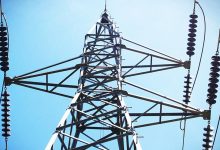Head of the Australian Energy Market Operator Audrey Zibelman has called on the energy sector and governments to work together to develop a plan for investment, to manage the energy market transition and to avoid a worsening of the challenges facing the Australian electricity market.
Speaking at the AFR Energy Summit in Sydney, AEMO CEO told attendees that she sees four key challenges that need to be addressed by both market operators and participants in an Australian energy market undergoing a substantial transition away from centralised fossil fuel generation, to a distributed energy system using renewable energy and storage.
AEMO currently manages a National Energy Market with more than 2 million sources of electricity, covering both large-scale and small-scale generation systems, with an addition 15MW of generation capacity added to the energy market on an average day and AEMO estimates that this could double with continued growth in battery storage uptake.
The first issue Zibelman identified is the ‘growth in ageing units’ with the market operator conscious of the looming retirements of a large proportion of the Australian coal-fired generation fleet.
The issue of generator retirements was recently highlighted by the Grattan Institute, outlining how the retirement of around 20GW of old coal-fired generation infrastructure between now and 2050 will place significant pressure on the Australian energy system unless sufficient investment in replacement infrastructure is forthcoming.
Zibelman stressed the need for investment in a range of new generation technologies across a diverse geographical distribution, to address the variability of supply and to ensure system adequacy is maintained.
Zibelman also sees that there is a crucial need for a proactive plan for managing the investment in the energy system. A coordinated plan is required to support investment in new energy infrastructure well before it is needed, otherwise customers would face the negative consequences of waiting until a shortage of capacity is identified before it is acted upon.
“We need to be making sure we have a plan to get the right investment at the right place at the right time,” Zibelman said.
“There’s no such thing as ‘just in time’ in energy. Because just in time in energy usually means system black. We absolutely need to make investment ahead of time.”
The third issue is related to the management of frequency within the electricity system, which has become an emerging issue due to growth in distributed renewable energy resources.
“When you manage the frequency of the energy system, you want to manage it in a very narrow bandwidth. That’s how you keep the system stable. What we have seen over the last decade, is as you get more and more renewables our frequency bandwidth is getting spread out, which means the frequency needs to be managed much more tightly,” Zibelman said.
The fourth major issue was the management of the ‘duck curve’, which has seen the growth of solar power dramatically reduce demand from the wholesale electricity market during the day and which can lead to challenges managing voltage within the energy system.
Zibelman said it was the Spring and Autumn periods that were an emerging concern, when in some parts of the network the supply of solar energy exceeded modest energy demand. Zibelman added that it was crucial that network operators develop strategies for managing periods when supply from distributed energy systems will exceed demand to maintain a secure energy system.
“We have a multi-aspect problem; sometimes we don’t have enough energy, sometimes we have too much energy and sometimes we don’t have the right type of energy. We have to think about how we solve all of those problems going forward,” Zibelman said.
Zibelman also highlighted that the pace of transition in the energy sector is likely to accelerate, citing the experiences in other sectors, such as the rise of internet adoption in the 1990s, as providing an example within the telecommunications sector of an experience an increasingly rapid transition towards new technologies.
AEMO sees the development of its Integrated System Plan as being a key component of the necessary system planning within the energy market. AEMO is currently undertaking the preparation of the 2019-20 Integrated System Plan and is due to publish the final plan in June 2020.










